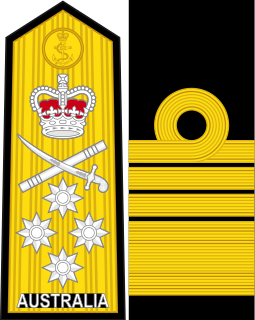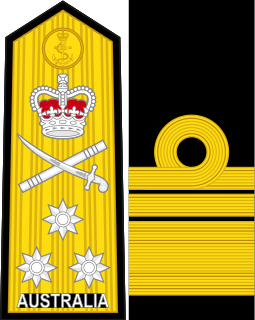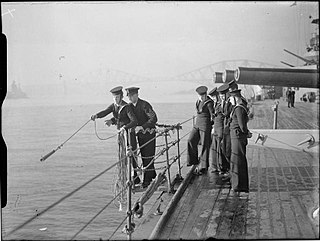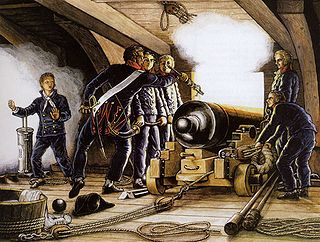 W
WAn admiral of the fleet or fleet admiral is a military naval officer of the highest rank. In many nations the rank is reserved for wartime or ceremonial appointments. It is usually a rank above admiral, and is often held by the most senior admiral of an entire naval service.
 W
WAdmiral of the fleet (AF) is the highest rank in the Royal Australian Navy (RAN), but is a ceremonial, not active or operational, rank. It equates to the rank code O-11. Equivalent ranks in the other services are field marshal and marshal of the Royal Australian Air Force. Like those ranks, admiral of the fleet is a five-star rank.
 W
WAdmiral is the highest active rank of the Royal Australian Navy and was created as a direct equivalent of the British naval rank of admiral. It is a four-star rank. Since 1968, generally the only time the rank is held is when the Chief of the Defence Force is a navy officer.
 W
WRear admiral is the third-highest active rank of the Royal Australian Navy and was created as a direct equivalent of the British rank of rear admiral. It is a two-star rank.
 W
WVice admiral is the second-highest active rank of the Royal Australian Navy (RAN). It is a three-star rank, and was created as a direct equivalent of the British rank of vice admiral. The rank is held by the Chief of Navy and, when the positions are held by navy officers, by the Vice Chief of the Defence Force, the Chief of Joint Operations, the Chief of Joint Capabilities, or equivalent position.
 W
WA boatswain, bo's'n, bos'n, or bosun, also known as a petty officer, deck boss, or a qualified member of the deck department, is the most senior rate of the deck department and is responsible for the components of a ship's hull. The boatswain supervises the other members of the ship's deck department, and typically is not a watchstander, except on vessels with small crews. Additional duties vary depending upon ship, crew, and circumstances.
 W
WA boy seaman is a boy who serves as seaman or is trained for such service.
 W
WCaptain is the name most often given in English-speaking navies to the rank corresponding to command of the largest ships. The rank is equal to the army rank of colonel and airforce rank of group captain.
 W
WCaptain is the name most often given in English-speaking navies to the rank corresponding to command of the largest ships. The rank is equal to the army rank of colonel and airforce rank of group captain.
 W
WCaptain is the name most often given in English-speaking navies to the rank corresponding to command of the largest ships. The rank is equal to the army rank of colonel and airforce rank of group captain.
 W
WCommodore is a one-star commissioned armed officer rank in the Pakistan Navy, coast guards, and marines. It is the fourth-highest rank in Pakistan armed services with a NATO code of OF-6, it is worn on epaulettes with a one-star insignia, it ranks above OF-5 rank Captain and below two-star rank Rear Admiral. Commodore is equivalent to the rank of Brigadier of Pakistan Army and Air Commodore of the Pakistan Air Force.
 W
WCorvette captain is a rank in many navies which theoretically corresponds to command of a corvette. The equivalent rank in the United Kingdom, Commonwealth, and United States is lieutenant commander. The Royal Canadian Navy uses bilingual ranks, with capitaine de corvette being the French equivalent of lieutenant commander.
 W
WThe droungarios of the Fleet, sometimes anglicized as Drungary of the Fleet, was the commander of the Imperial Fleet, the central division of the Byzantine navy stationed at the capital of Constantinople, as opposed to the provincial (thematic) fleets. From the late 11th century, when the Byzantine fleets were amalgamated into a single force under the megas doux, the post, now known as the Grand droungarios of the Fleet, became the second-in-command of the megas doux and continued in this role until the end of the Byzantine Empire.
 W
WFlotilla admiral is the lowest flag rank, a rank above captain, in the modern navies of Belgium, Bulgaria, Denmark, Finland, Germany and Sweden. It corresponds to the ranks of commodore or rear admiral in the navies of the United States, United Kingdom, and certain other countries.Insignias of flotilla admirals
 W
WFrigate captain is a naval rank in the naval forces of several countries. Corvette lies one level below Frigate.
 W
WThe rank of general at sea, was the highest position of command in the English Parliamentary Navy, and approximates to the current rank of admiral. Alongside others, the generals at sea were also appointed as Commissioners for the Admiralty and Navy.
 W
WLieutenant commander is a commissioned officer rank in many navies. The rank is superior to a lieutenant and subordinate to a commander. The corresponding rank in most armies and air forces is major, and in the Royal Air Force and other Commonwealth air forces is squadron leader.
 W
WThe master, or sailing master, is a historical rank for a naval officer trained in and responsible for the navigation of a sailing vessel. The rank can be equated to a professional seaman and specialist in navigation, rather than as a military commander.
 W
WIn a navy, a rate, rating or bluejacket is a junior enlisted member of that navy who is not a warrant officer or commissioned officer. Depending on the country and navy that uses it, the exact term and the range of ranks that it refers to may vary.
 W
WA powder boy or powder monkey manned naval artillery guns as a member of a warship's crew, primarily during the Age of Sail. His chief role was to ferry gunpowder from the powder magazine in the ship's hold to the artillery pieces, either in bulk or as cartridges, to minimize the risk of fires and explosions. The function was usually fulfilled by boy seamen of 12 to 14 years of age. Powder monkeys were usually boys or young teens, selected for the job for their speed and height: they were short and could move more easily in the limited space between decks and would also be hidden behind the ship's gunwale, keeping them from being shot by enemy ships' sharpshooters. These powder monkeys held no official naval rank on the ships that they sailed on. Some women and older men also worked as powder monkeys.
 W
WA rear admiral in the U.S. uniformed services is either of two different ranks of commissioned officers: one-star flag officers and two-star flag officers. By contrast, in most nations, the term "rear admiral" refers to an officer of two-star rank.
 W
WSenior petty officer is a non-commissioned officer rank in the Irish Naval Service. The rank is deemed equivalent to a member of the NATO armed forces ranked E-6, making it the equivalent of a Petty officer First Class in the US Navy or Petty officer in the Royal Navy. The rank is one grade below an Irish Chief petty officer and one above Petty officer.
 W
WCaptain is the name most often given in English-speaking navies to the rank corresponding to command of the largest ships. The rank is equal to the army rank of colonel and airforce rank of group captain.
 W
WShip-of-the-line lieutenant is a common naval rank, equivalent to the modern naval rank of lieutenant in the UK, the Commonwealth and the US. The name of the rank derives from the name of the largest class of warship, the ship of the line, as opposed to smaller types of warship.